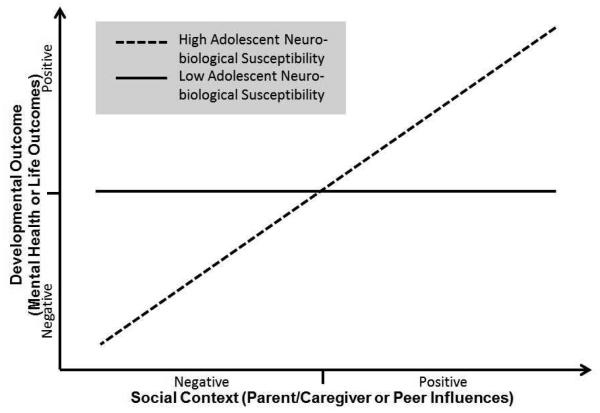Fig. 2.
Graphical representation of the moderated effect of social contextual influences on developmental outcomes in accordance with adolescent neurobiological susceptibility. The x-axis represents variation in social contextual factors from negative to positive (e.g., harsh parenting vs. supportive parenting; peer victimization vs. peer support); the y-axis represents variation in developmental outcomes from negative to positive (e.g., depressive symptoms); and the two lines represent groups differing on adolescent neurobiological susceptibility, high versus low. Moderation by adolescent neurobiological susceptibility is shown in that the relation between adolescent neurobiological susceptibility and developmental outcomes is significant at both ends of the social-contextual influence.

